Introduction: The Battlegroup
For over eighty years now, Western soldiers have been formed into tactical teams called ‘battlegroups’. These groupings, ranging in numbers from around 600 to 1,200 troops, are designed to bring together various different military capabilities to make the whole more than the sum of its parts. The idea was started by the Germans in World War Two with the formation of Kampfgruppe: flexible units of tanks, infantry, artillery, and engineers. It was truly institutionalised by the British and the Americans throughout the Cold War and beyond; a consistent doctrinal path that links the British Army of the Rhine of the 1960s to the modern ‘Brigade Combat Teams’ of the US Army.
One of the thorniest challenges has always been getting the command and control of the ‘battlegroup’ right. Despite the remarkable advancements in technology since the 1960s, the basic theory of command has remained fundamentally unchanged. The centre-point is a single human, a ‘battlegroup commander’, who is ultimately accountable for its tactical successes and failures. He or she may be supported by staff, and by technology, but ultimately the buck stops with the commander. In this manner, the battlegroups of the 2020s look pretty similar to those that ejected the Iraqis from Kuwait in 1991. They would be familiar enough to the soldiers of the Kampfgruppe that advanced through the Ardennes in 1940.
Technology has always played an incremental role in the evolution of command. The recent, remarkable advancements in AI, however, are fundamentally redefining approaches in many professions. Could the teaming of humans and AI revolutionise the command of the battlegroup? This article explores the opportunities and risks of such a pairing.
The Current State: The Image of Command and Control in a Western Battlegroup
Picture a modern ‘battlegroup headquarters’. It is housed in a set of dimly or red-lit spaces: tents, rooms in a building, or indeed increasingly underground. It isn’t all that modern: money for armies is always tight, and the headquarters must be able to move quickly. Wooden tables and chairs, able to be folded and stacked on a truck or armoured vehicle. Strip-lighting cable-tied to tent poles or ceilings. Neat rows of rifles and body armour. The ever-present smell of coffee.
Sat at the fold-up chairs are the ‘staff’. Ten to fifteen officers and soldiers who provide the ‘control’ to the ‘command’. These are specialists, each of whom is responsible for providing advice to the commander: intelligence, operations, logistics, communications, to name but a few. Most of them are sat in front of hardened laptop computers. Cables run back into secure network stacks in the armoured vehicles that are the lifeblood of the battlegroup: its mobility, its batteries, and its mobile source of power. Radios crackle, fed by vehicle antenna or satellite dishes. The hum of heavy, fuel-consuming generators is constant, augmenting the limited voltage capability of the vehicles.
At the centre of the room sits the ‘battlegroup commander’. A military officer of around twenty years’ experience, this individual is the centre point of the command of the battlegroup. Their responsibilities are many. They are the keystone of battle-planning, responsible for analysing the mission from the higher commander and establishing the ‘commander’s intent’ and theory of success for each mission. They reconnoitre the battlefield, using experience and expert advice to read the ground and anticipate the enemy’s intentions. They analyse the potential ‘courses of action’ developed by the staff, directing the final plan to be delivered in orders. Most importantly, they actually command the ‘battlegroup’ in battle, traditionally close to the front line: fusing a battle-picture and hard-won instinct to adjust tactics on the fly. The aim of all of this is to defeat a live and often cunning enemy, one that seeks the destruction of the battlegroup in return.
It is this last element of instinct that is the mark of a good commander; what T.E Lawrence referred to as the ‘flash of the kingfisher across the pool’, or Clausewitz described as coup d’oeil (the ‘stroke of the eye’).
Most Western ‘battlegroup commanders’ are well-prepared for their role. Selected for competence and leadership qualities, they will have commanded smaller formations for years in the build-up. They will have attended staff colleges and academies, learning the theories of war and warfare. Most will be hard-working and highly motivated, proud to be selected for such a demanding position.
But for all their skills and experience commanders remain intrinsically human, and therefore, flawed. Their capacity for cognition is limited, bounded by their natural intellectual barriers. They are subject to personality flaws, preconceptions, and biases. At some stage, although they will tell you this is not true, they get tired and have to sleep.
All of these can detract from the apogee of the commander’s skill: the quality of military decision-making. But what if there was another option, one that overcome these flaws?
Imagining the Future: The Battlegroup Commander / AI Team
Picture now a battlegroup where the Commander teams with an AI cognitive agent. This is increasingly a viable prospect. Such agents have been in development in real terms since the 1990s but have seen a phenomenal acceleration in the last five years, bridging with some success into high-risk and high-skill professions. IBM Watson, originally tested in the game Jeopardy! in 2011, has grown into agents like Watson for Oncology, a cognitive assistant for doctors that is increasingly trusted in diagnosing cancers. In the world of finance, AI agents are increasingly analysing mass data to advise on portfolio allocations. What used to be hand-coded, rules-based systems, accessible only via rigid menus, are now natural-language enabled, intuitive and probabilistic AI agents able to deal with messy, ambiguous environments.
Let us call our military AI agent ‘Niner+’, to match the common Western ‘Niner’ radio callsign for a battlegroup commander. Our ‘Niner+’ is a unique AI agent created specifically for this battlegroup commander: a digital twin, if you will. The agent has been alongside the commander on the hard journey to achieve command of this battlegroup. They have trained together, in both simulation and in live field exercises. ‘Niner+’ knows the commander intimately. It has observed and learned their style and tactical approach, the way they think and how they assimilate information. It understands the cognitive markers that the commander needs to tip over the edge into a solid and competent decision. Equally, ‘Niner+’ knows the commander’s weaknesses and shortfalls. It is aware when the commander has a bent towards the impetuous, and when passion or excitement can overcome logic. It understands the cracks and fissures in decision-making caused by fatigue. It senses when the commander is just not on their game.
One thing ‘Niner+’ definitely knows more about than the commander is the battlegroup, and the enemy. The AI agent maintains an encyclopaedic knowledge of both friendly and enemy military equipment, weapon systems, ballistics, terrain mapping, doctrine, and historic battlefield performance. It does not, indeed cannot, forget this data, no matter the pressure. It can use this data-set to make physics-based predictions on the likely outcomes of tactical engagements: where to place an artillery gun line to make sure an enemy avenue of approach is in range, the weight of fire needed to assure the destruction of an enemy armoured troop, the optimal flight plans and rotations for drones to ensure an ‘unblinking eye’ over the battlefield. No human commander, no matter if they are Slim or Rommel, can ever match this.
The commander and ‘Niner+’ work in a genuine partnership, with the agent supporting the commander throughout the planning process, and even in battle. The commander uses ‘Niner+’ to review their initial mission analysis and draft ‘Commander’s Intent’, checking it for logic and sufficiency against the orders from the higher headquarters. The agent advises early on the suitability of the commander’s planning assumptions to the staff and advises on what risks the commander could see as tolerable or intolerable. It helps select the most viable ‘course of action’. And when the fight begins, it constantly sits on the commander’s shoulder to help visualise the battlespace, and to direct manoeuvres and engagements.
The commander and ‘Niner+’ are a team, but in our Western battlegroup it is clear who is really in charge. In both culture and in legislation, the human commander remains firmly on the loop: morally, ethically, and legally responsible for decisions. ‘Niner+’ is no more than an advisor, another member of the headquarters team helping the commander to make the best decisions.
This teaming image is increasingly one that could be a reality. But what are the opportunities, challenges, and risks of pursuing it?
Opportunities
Advances in AI agents offer a raft of opportunities that might directly mitigate perennial weaknesses in the command of battlegroups. Some of the most prominent are outlined below.
Wargaming Courses of Action. One of the most challenging roles of the commander remains selecting an optimal ‘course of action’ and then building the orders and control measures that help execute it. The issue lies in the ability to imagine how the battle might unfold: the myriad turns and dilemmas that might stem from each possible variation of the future. The commander currently uses a mixture of staff-input and intuition to perceive the strengths and weaknesses of each given course of action, often with incomplete information and under time pressure. ‘Niner+’ can help reduce this pressure for accurate foresight, ‘wargaming’ the potential courses of action tens of thousands of times at machine speed. With enough topographical, capability, and behavioural data, ‘Niner+’ can provide the commander with solid, probabilistic advice on the relative strengths and weaknesses of courses of action: on the likelihood of tactical success. It can help make the optimum choice.
Watching the Commander’s Blind Spot. All commanders have cognitive limitations, only able to consider so many aspects of a developing plan or ongoing battle at once. This leads to the development of blind spots. Having observed the commander for many years, ‘Niner+’ knows where these blind spots tend to be and constantly watches for them. A gap in the intelligence, surveillance and reconnaissance (ISR) matrix that the commander has missed? The agent watches for indicators and warnings that the enemy are exploiting that gap, warning the commander and proposing available assets to fill it. A tendency to over-extend operations beyond the logistics sustainability of the tanks and armoured fighting vehicles? ‘Niner+’ puts up a red flag in time to allow an adjustment to the tempo of operations. Overall, the agent watches the commander’s peripheral vision, looking for risks and then flagging them to the commander with enough time to shift the plan.
Overcoming Human Frailty. Commanders may be tough and resilient, but all are subject to human frailty. Hunger, fatigue, bias, paranoia, imposter-syndrome: each factor can impact the quality of the Commander’s decision-making. ‘Niner+’ has fewer of these flaws. Indeed, it can be trained to learn when the Commander’s decision-making is being impacted by them, providing warnings of reduced cognitive capacity, and even able to ‘lean in’ and help if the indicators become significant. The agent can help the Commander to overcome perception bias, and provides confidence where paranoia is starting to set in. Importantly, ‘Niner+’ does so dispassionately. It is not impacted by the trauma of casualties and is resistant to the fallacy of sunk costs. Two and a half millennia ago Thucydides articulated three drivers of human behaviour in warfare: fear, honour, and interest. ‘Niner+’ substitutes these with logic and reason.
A Constant ‘Red Team’. War is at heart a combative, violent, and contested activity between opposing groups. History tells us that the best commanders are those who can get into the mind of their adversary, predicting their approaches, stoking their fears and weaknesses, and fracturing their will. ‘Niner+’ can help achieve this by seeking to replicate and adopt the persona of the enemy chain of command. This provides access to a constant ‘Red Team’, one that can assess the likely effectiveness of the battlegroup plan in outthinking and outmanoeuvring the enemy. Going further, ‘Niner+’ might use this capacity to shine a light back on the flaws and weaknesses of the commander’s own plans, and even their psychology: exposing where a cunning adversary might exploit vulnerabilities and fears. This constant ‘Red Team’ ensures the commander remains wholly engaged in fighting the adversary, and not the plan itself.
A Better Relationship with Risk. Overall, ‘Niner+’ holds the potential to improve the commander’s relationship with the fundamental currency of combat: risk. Every tactical decision the commander makes is about balancing risk (formed of consequence and likelihood) with potential opportunity. This is an inherently uncertain practice, one that often relies heavily on the trained intuition of the commander. ‘Niner+’ can help improve this relationship through large dataset adaptive statistical analysis. The agent can examine and carefully aggregate risks, highlighting where acceptable tolerances have been exceeded. The agent is able to look to the phase of battle after next, articulating the potential long-term cost of a given tactical decision. Most importantly, it might be able to identify the moment where opportunity lies, and where the commander might want to take extreme risk to seize it: TE Lawrence’s ‘flash of the kingfisher’. These are the moments that, if identified, can prove to be decisive. ‘Niner+’ helps the commander to find and accept good risk, while negating and avoiding the bad.
Challenges and Risks
The opportunities described above are tangible and significant, but they are not without their challenges and risks. Some of these are significant, speaking at times to the very nature of war as a phenomenon and how it might interact with the inherent reasoning of machine learning. Some of these are described below.
Mud, Sweat and Tears: The Practicalities of Delivery. The battlefield is not a welcoming place for an AI agent. Picture the littoral and amphibious Pacific campaigns of the Second World War, which took place 80 years ago. Mud, constant rain, high-humidity, and lots of salt water. Extreme, austere jungle and mountainous conditions. Extended logistics and supply chains that imply a ‘tyranny of distance’. A constant, unpredictable enemy threat. Most notably, very few sources of reliable power! Technology has changed in the years since, but the environment fundamentally remains the same.
How does one reliably pair the commander and ‘Niner+’ in such an environment? It might be possible in a deployed headquarters environment, where the commander could access server and power sources, and interact through suitable hardware. But once an operation has begun the place of the commander has always been forward, either on foot or mounted, directing troops in the battle-area. A natural language-enabled AI agent might be able to be another voice in the commander’s headset, but overcoming the physical limitations of server space, processing power, and batteries in armoured vehicles will be exceptionally challenging. Any solution that requires an emanating datalink between the deployed commander and the agent risks enemy targeting. At worst, a reliance on ‘Niner+’ might encourage the commander to stay in the headquarters and not command forward: a trade off in presence that has wider implications for the will of the battlegroup to fight.
Data and the Unpredictability of War. AI agents are most effective when working with high-quality, consistent, and well-understood datasets. Watson for Oncology is a good example of this. Cancer is in itself an unpredictable illness, but the processes by which labs collect data are strictly normalised, peer-reviewed, and undertaken under fixed conditions. Watson for Oncology feeds from this stability. Sophisticated agents can certainly work with more unpredictable data in unpredictable environments: IBM Watson for Weather, for example, provides probabilistic analysis of weather patterns. This relies, however, on constant access to thousands of weather sensors safely arrayed within the target environment.
War, however, is a wholly different proposition. Characterised by violence, it is the most chaotic and unpredictable of human activities. It defies stability. Furthermore, the battlefield in war is inherently contested by an enemy (else it wouldn’t be a battlefield), and therefore sensor access is also contested: Watson for Weather would probably find its task far more difficult if the storm was trying to deliberately destroy its sensors or was trying to kill Watson itself. ‘Niner+’ is just as vulnerable to the ‘Garbage In Garbage Out’ (GIGO) rule as any other AI agent, and war as a phenomenon is the nadir of stable, quality data collection. There are few obvious options to overcome this.
Cognitive Debt and the Loss of Coup d’Oeil. The third risk is to the commander themselves, coming in the form of ‘cognitive debt’. The commander’s intuition is essentially built of three elements: studied theory, repetitive practice, and applied learning from tactical successes and failures. This is what builds the coup d’oeil that has been the art of the military commander for hundreds of years. Every time, however, the commander relies on ‘Niner+’ they may incur a form of ‘cognitive debt’ that applies risk against one or all of these conditions. It is almost certain that the commander will become gradually less practiced in the core skills of command. This is even more the case when modern AI agents manifest the ‘black box’ phenomenon: the inability to explain or ‘show the working’ behind their advice. The AI agent just knows that the answer is logically the right one.
What happens, therefore, if the system fails and the AI is taken away? Like the creeping death of the compass and the map, the commander may become less able to deal with the friction and chaos of warfare. At worst, fear and panic might follow – perhaps the most dangerous outcome in combat. It is difficult to see how this outcome could be avoided.
Inevitably Pushing the Human Off the Loop. ‘Niner+’ in our scenario is a ‘human on the loop’ system. The AI provides analysis and advice to the Commander, but the human is at all times the final decision-maker. It is possible, however, that ‘Niner+’ will gradually and inevitably push the collective humans of the battlegroup headquarters off the loop. It is not at all clear how the human staff, traditionally responsible for providing ‘control’ advice to the commander, would take to the direct competition of the AI agent.
What if, for example, ‘Niner+’ disagreed with the advice of the battlegroup intelligence officer on the plans and intentions of the enemy? The commander might have only known the intelligence officer, a young captain of just a few years’ experience, for weeks or months. ‘Niner+’ will have been alongside the commander for years, building up a quotient of trust. It is likely, even inevitable, that decision-making would centralise over time to the partnership of the commander and ‘Niner+’: pushing the human staff off the loop and potentially creating a toxic environment within the headquarters. Such behaviour would not be intentional, but the outcome would remain the same.
‘Niner is Down’: Combat Casualties and the Ghost of the Commander. The final risk relates to the ability of ‘Niner+’ to outlive our commander, and thus to create a crisis in command. The death of the commander is always possible, and succession plans exist for exactly this eventuality. The next officer in the line of command succession takes over if the commander is killed. But what happens to ‘Niner+’? Does the new commander kill the agent off and lose the years of accumulated, algorithmic learning: what might even be described as the ‘ghost’ of the deceased commander? Or does the new commander adopt ‘Niner+’ as his or her own, leveraging the benefit of years of accumulated tactical learning?
If the answer is the latter, the question has to be asked as to who is really in command of the battlegroup. Does the death of our commander suddenly push the AI agent decisively to the top of the loop? If this new commander defers instinctively to ‘Niner+’, then the AI agent is de facto in command (whether that is the intention or not). The human becomes the proxy, and not vice versa. In this manner, the decision to create ‘Niner+’ in the first place must be viewed from the broadest perspective of what might happen in war. For it is in war that necessity and expediency often take primacy, driving the importance of ethics, regulation, and morality to either the peripheral, or into the far distance.
Conclusion
Partnering with AI is the next logic step in military command and control, just as it is in other high-consequence professions like medicine and law enforcement. There is remarkable potential in the creation of a true partnership between a human commander, the product of years of training and hundreds of years of professional evolution, with a ‘Niner+’ AI agent that can access all historical data about battle, all together, all at once. Such a partnership offers the chance to decisively strengthen military decision-making, mitigating the risks of human fallibility and providing confidence and surety to the commander. This can only be a good thing. It might increase precision, reduce both enemy and civilian casualties, and prevent disasters. Ultimately, it might even shorten or prevent war.
The risks, however, are as evident as the opportunities. Putting to one side the practicalities of maintaining AI on the battlefield, it is exceptionally hard to predict how the intensely human activity of war will interact with such agents. For once, we have no precedents to look back on.
But some things seem probable. The military profession is highly likely to incur a ‘cognitive debt’ against the very skillset that forms the foundation of the profession of arms. It is hard enough to maintain human cohesion and the will to fight in a battlegroup as it is, let alone when the staff and soldiers have to complete with AI agents that don’t get tired or frustrated. Yes, western militaries will hold hard to keeping ‘humans on the loop’, but it seems likely – even inevitable – that they will be incrementally (and sometimes decisively) crowded out by the sheer expediency of AI.
Where violence is the professional currency, there is no application of a non-human entity that does not carry uncertain moral risks. These must be considered in width, depth, and context before ‘Niner+’ can be allowed to exist.
No AI agents were used or harmed in the writing of this article.
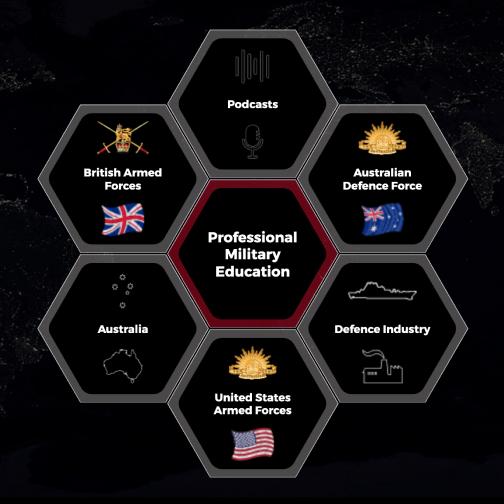
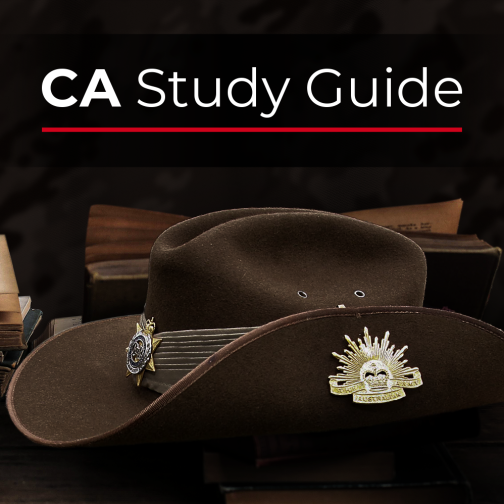

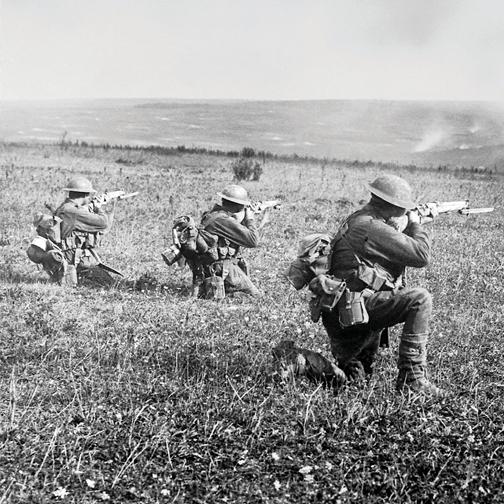


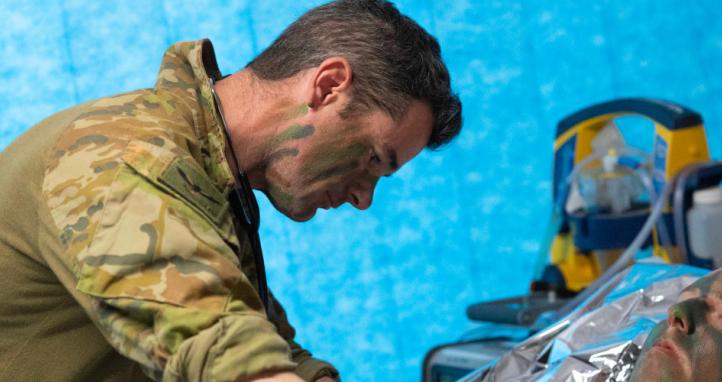
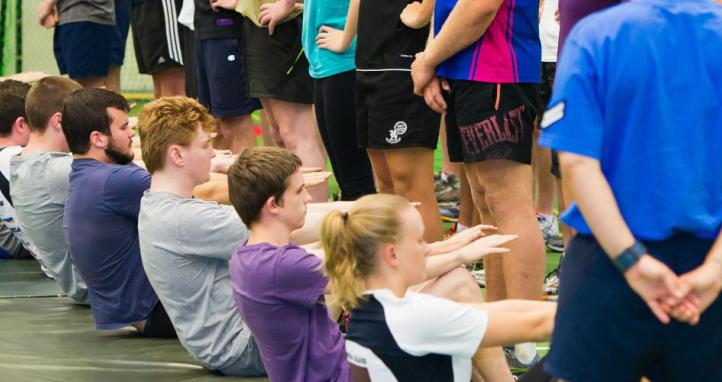
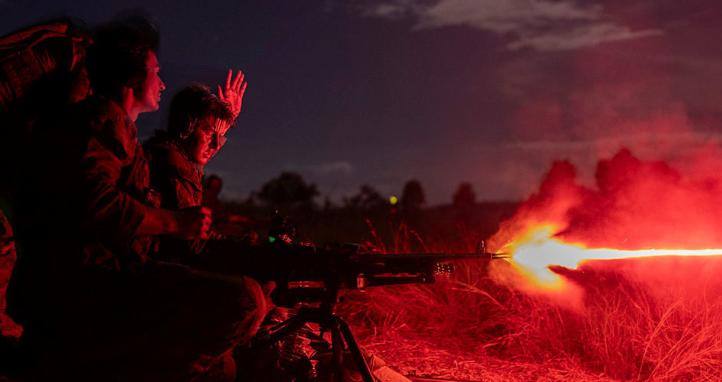
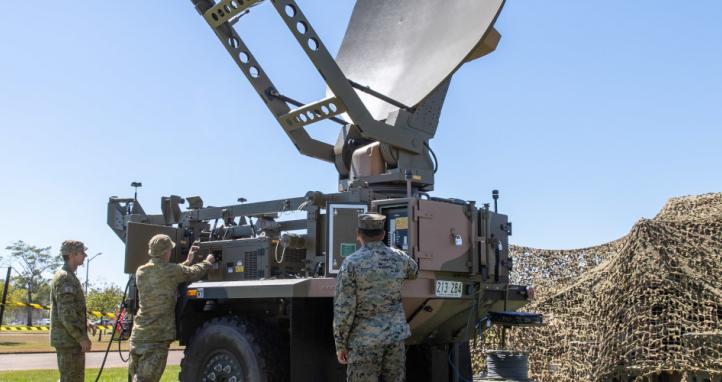
1. Break policy paralysis – stop spending years writing policy & standards to centralise AI and kill momentum.
2. Unlock the data – AI is useless if it only sees 1% of what Defence holds.
3. Start small – use AI on low-risk tasks (admin, briefs, SITREPs, minutes, learning support, knowledge management).
4. Treat IM as an enabler – like US/NATO, not an admin overhead.
5. Embed IM/data staff in formations & units – not just in Canberra.
6. Push AI tools to the edge – provide deployable, offline-capable systems.
7. Upskill staff – build AI literacy into PME and training continuums.
8. Fix the ADF Data Strategy – poor data means poor AI; formations have seen little benefit other than brochureware.
9. Stop overclassifying – too much data is locked away to be useful.